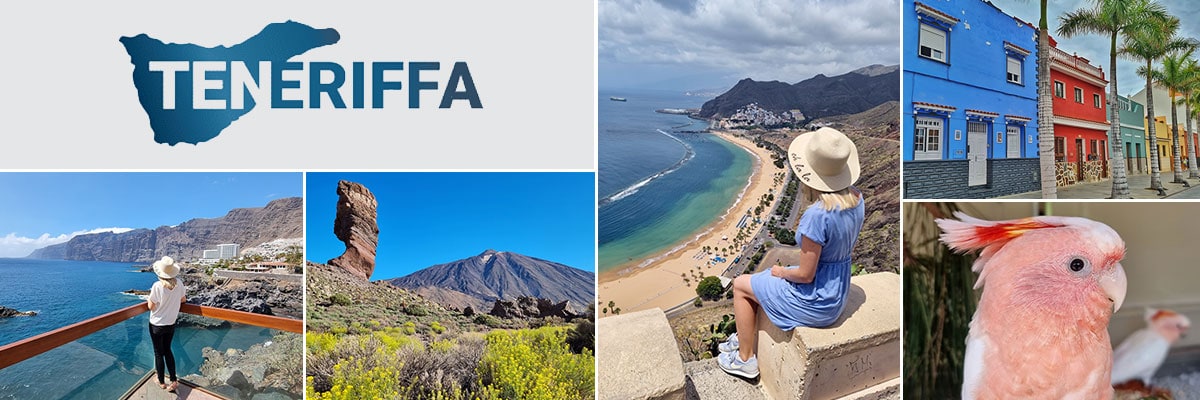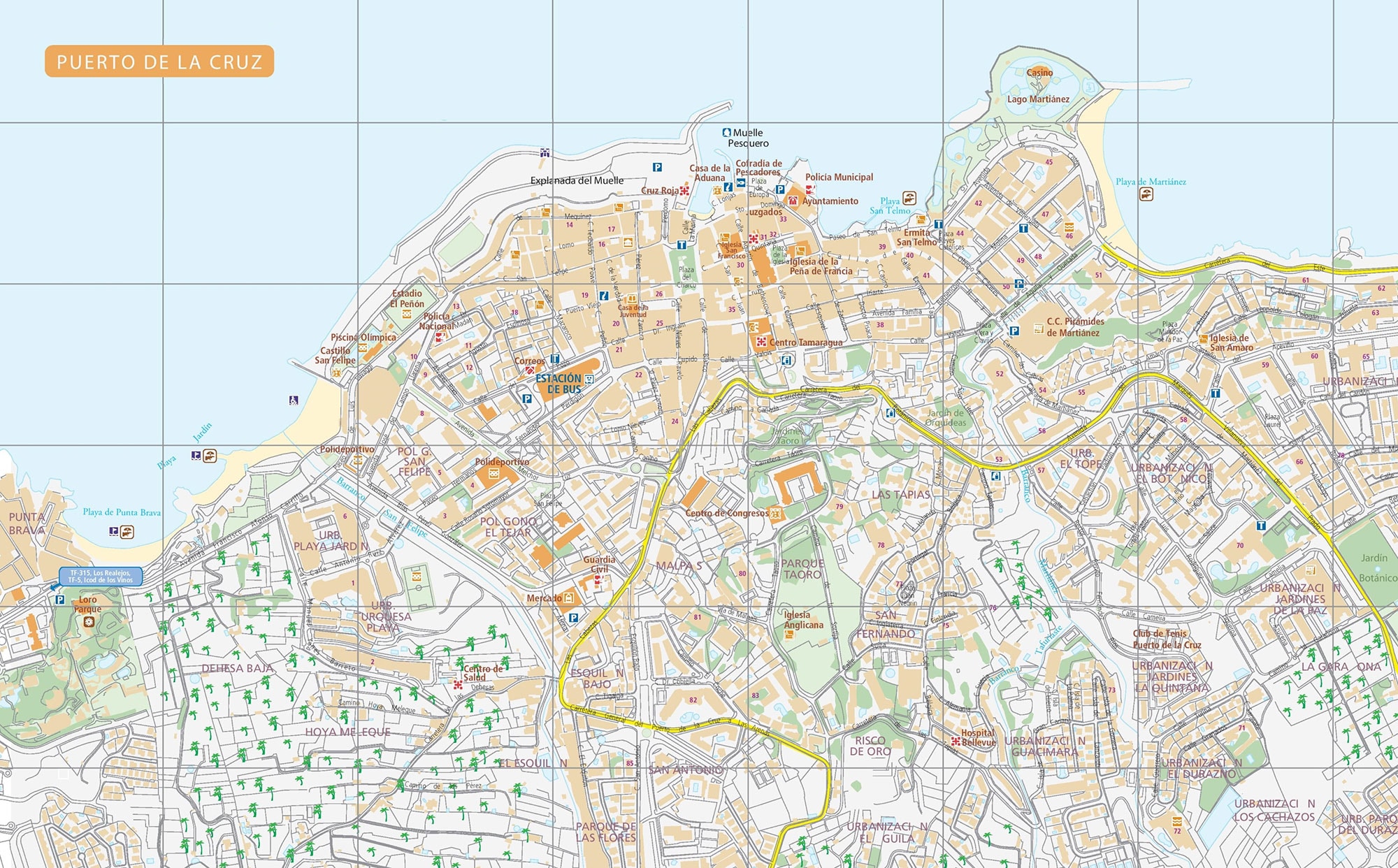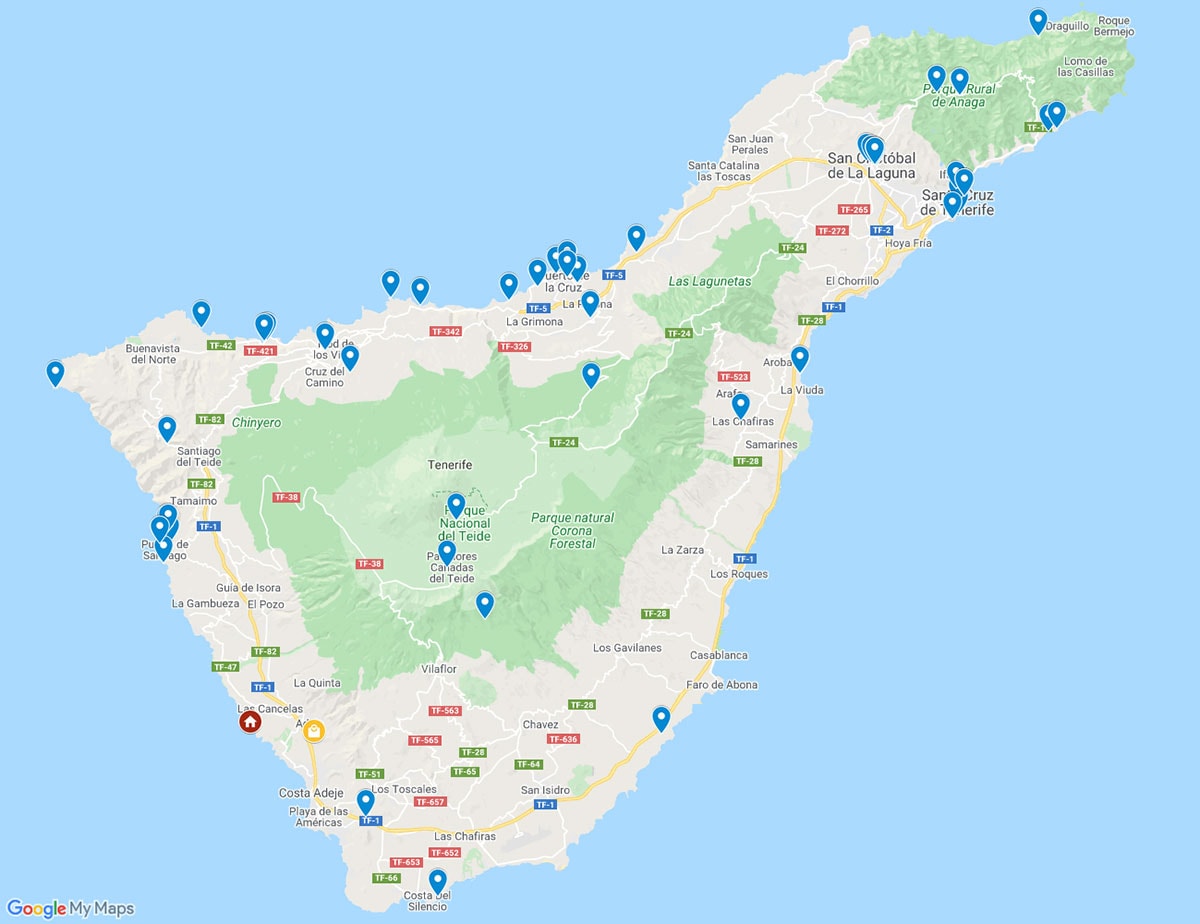The most famous town and tourist center on the north coast of Tenerife is Puerto de la Cruz. We spent a whole day here and find that the city has a lot to offer visitors: from beautiful photo spots in the traditional fishing district of La Ranilla to the species-rich Loro Parque and the impressive Botanical Garden.

Table of contents
Things to know about Puerto de la Cruz
Puerto de la Cruz is the eighth largest municipality in Tenerife and, together with some neighboring municipalities, forms a conurbation in which about 140,000 inhabitants live. Even before 1502, today’s city was “only” the fishing port of the city of La Orotava, about 300 meters higher, but grew more and more into a strategically important location in Tenerife. After the first real hotels opened at the end of the 19th century, tourism slowly picked up speed, so that Puerto de la Cruz was declared a ‘place of tourist importance’ by the Spanish government in 1955. Today, tourism is a driving factor in the city and determines the economic and cultural life.
A large version of the map of Puerto de la Cruz can be downloaded here as a .pdf version for free.
The most famous sights in Puerto de la Cruz
In order to be able to explore the city on foot, we parked our rental car very centrally at the Plaza de Europa in an underground car park. From here, all the major attractions in the city center are easily accessible on foot and on your own.
A tour of the city center
At our starting point, the Plaza de Europa, the first sight was already to visit. The Bateria de Santa Barbara was originally the fortification and defense of Puerto de la Cruz to protect and defend the city from possible pirate attacks. The six cannons you see here all come from the 18th and 19th century.
A little further west we passed the small fishing port of Puerto Pesquero and the black pebble beach Playa del Muelle. Here is a very beautiful sculpture of a fisherman. From here it is only a few steps to the Plaza del Charco,which is one of the most popular squares in the city, but unfortunately we did not like it at all.
A highlight for young and old is the municipal swimming pool complex Costa Martiánez which is located directly on the ocean. If it had been a little warmer, we would certainly have gone swimming here. The artificially created swimming pool holds about 27,000 cubic meters of seawater and is surrounded by four other adult pools and three children’s pools. Various bars and restaurants provide culinary catering.
On the edge of the city center, we discovered a super beautiful photo spot with the colorful stairs in the San Amaro district which totally reminded us of the colorful Selaron stairs in Rio de Janeiro. The steps are painted with the works of Agatha Christie. The occasion for this work of art is the Agatha Christie Literature Festival, which has been organized every two years since 2007 in honor of the author.
In the city center there are two very nice churches. The church of Nuestra Señora de la Peña de Francia is the main church of the city, built in the 17th century, which is located in the beautifully designed Plaza de la Iglesia. Since 2003, the church and its works of art have been listed as historical monuments. Only about 200 meters away is the Church of San Francisco which was the church of a Franciscan monastery dissolved in the 19th century. Built in 1599, it is considered the oldest building in Puerto de la Cruz and houses some valuable works of art from the 15th to the 21st century.
The fishing district of La Ranilla
We liked the district of La Ranilla the most during our city tour through the city center. The district is virtually the birthplace of the city of Puerto de la Cruz, because here once the first fishermen settled in small huts. The houses were simply built in a typical Canarian architectural style and one lived here – often in poor conditions – as an extended family under one roof. Today, the district is a real sight, because especially in the two traffic-calmed streets Calle Mequinez and in the Calle del Lomo you will find many different colorful houses.
The Playa Jardín & the Castillo San Felipe
Puerto de la Cruz has a very nice beach on the western edge of the city, which consists of black volcanic sand. The beach “Playa Jardín” was artificially created in the 1990s and equipped with palm trees, cacti and other plants. Actually, the beach even consists of three areas, which are separated from each other by rocks: The two large bays “Playa del Castillo” and “Playa Maria Jiménez” as well as the somewhat stony section “Playa Chica” in the middle. Here is also an artificially created waterfall, which we unfortunately did not look at. By the way, clean sanitary facilities are sufficiently available.
Right next to Playa Jardín is Castillo San Felipe, a 17th-century colonial-style fortification that was supposed to protect the old port from pirate attacks. In a major flood in 1826, the fortress was severely damaged. Since its restoration in the 1990s, the castle has served cultural purposes today.
The Botanical Garden
The Botanical Garden Jardín de aclimatación de La Orotava of Puerto de la Cruz, which was created in 1788, is located just outside the city center on the southeastern outskirts of the village. We were able to park our rental car directly in front of the garden free of charge in a side street. After paying the entrance fee of 3 EUR per person, we strolled through the Botanical Garden for 30 minutes. It is not insanely large, but really nicely laid out and downright overgrown. The plants here stand close to each other; sometimes you felt like in the jungle.
We were particularly impressed by the huge strangling fairy with its numerous aerial roots, which give the tree a veritable column and support pillar system. By the way, these aerial roots do not grow from the main root, but from other parts of the plant, such as the trunk or the branches. Very fascinating!
A detour to the Botanical Garden should definitely be on the agenda if you are in Puerto de la Cruz. A real quiet oasis in the middle of the city. We can absolutely recommend a visit!
The Loro Parque Zoo
One of the most famous and beautiful sights in Tenerife is the Loro Parque in the resort of Puerto de la Cruz. Originally conceived as a paradise for parrots (Spanish: Loro), the history of the park began on an area of 13,000 m² and 25 employees. Today, it has the largest and most diverse reserve for parrot species and subspecies in the world and offers a home to about 4,500 animals in 570 species on an area of 135,000 m². In addition to biodiversity, the Loro Park is also characterized by the quality of its near-natural facilities and respect for the environment. As a result, the park was awarded the Travellers’ Choice Award as the “Best Zoo in the World” in 2017, 2018 and 2019. About our visit to the zoo we have written a separate post, which can be found here.
Street Art
When we stroll through cities, we always keep our eyes open for street art because we just really like it. And lo and behold, also in Puerto de la Cruz we could discover a few murals in the district of La Ranilla. We have read that this “Puerto Street Art” has been around since 2014 and that 13 world-famous artists have immortalized themselves on the large walls here.
A map with all sights & photo spots on Tenerife
On the following map at Google MyMaps we have marked all important sights, attractions and photo spots on Tenerife.Our travel reports from Tenerife
 » Santa Cruz de Tenerife – 8 Things to do & Top Photo Spots
» Santa Cruz de Tenerife – 8 Things to do & Top Photo Spots» The east coast of Tenerife – Attractions & Photo Spots
» The old town of La Laguna & the Rural de Anaga Park
» The Loro Park (Zoo) in Puerto de La Cruz
» The Los Gigantes Cliffs & Mountain village of Masca
» Puerto de la Cruz – Sights & the best Photo Spots
» North coast of Tenerife – Sights, Photo Spots & Things to do
» The Volcano Teide & Parque Nacional del Teide


